The Egyptian pyramids are among the most famous and enigmatic monuments in the world. These massive structures are not only architectural marvels but also hold mysteries about the history of ancient Egypt and its extraordinary civilization. The construction of the pyramids has fascinated people for centuries, and even today, scholars and researchers continue to ponder how such colossal structures were built using primitive tools and methods. In this blog, we will delve into how the pyramids were built, exploring the materials used, the engineering methods involved, and the techniques that allowed the ancient Egyptians to create such monumental structures.
- Egypt Tour Magic
- Egypt Tour Packages
- Excursions in Egypt
- Cairo Tours and Excursions
- Hurghada Tours and Excursions
- Soma Bay Tours and Excursions
- Makadi Bay Tours and Excursions
- Sahl Hasheesh Tours and Excursions
- El Gouna Tours and Excursions
- Marsa Alam Tours and Excursions
- Port Ghalib Tours and Excursions
- El Quseir Tours and Excursions
- Dendera and Abydos Day Tours
- Aswan Tours and Excursions
- Luxor Tours and Excursions
- Alexandria Tours and Excursions
- Sharm El Sheikh Tours and Excursions
- Top Rated Tours in 2025
- Optional Excursions in Egypt
- Private Transfer
- Blogs About egypt
- Ancient Egypt
- What You Need To know Before Your First Trip To Egypt
- Best Places to Visit in Egypt 2025
- Top Attractions in Red Sea Resorts 2025
- Top 10 Tourist Activities in Egypt
- Top 30 Activities You Can’t Miss in Egypt
- The Guide to Guided Tours in Egypt
- Egypt’s Ancient and Modern History
- The Nile River
- The Deserts of Egypt
- Historical Sites in Egypt
- Cairo
- Alexandria
- Luxor
- Aswan
- The Red Sea
- Dendera Temple
- El Fayoum Oasis
- Bahariya Oasis
- Siwa Oasis
- Al Alamein
- Marsa Matruh
- Ancient Egyptian gods
- famous Egyptian dishes
- UNESCO World Heritage sites
- About Us
- Why Egypt Tour Magic
- Egypt Tour Magic
- Egypt Tour Packages
- Excursions in Egypt
- Cairo Tours and Excursions
- Hurghada Tours and Excursions
- Soma Bay Tours and Excursions
- Makadi Bay Tours and Excursions
- Sahl Hasheesh Tours and Excursions
- El Gouna Tours and Excursions
- Marsa Alam Tours and Excursions
- Port Ghalib Tours and Excursions
- El Quseir Tours and Excursions
- Dendera and Abydos Day Tours
- Aswan Tours and Excursions
- Luxor Tours and Excursions
- Alexandria Tours and Excursions
- Sharm El Sheikh Tours and Excursions
- Top Rated Tours in 2025
- Optional Excursions in Egypt
- Private Transfer
- Blogs About egypt
- Ancient Egypt
- What You Need To know Before Your First Trip To Egypt
- Best Places to Visit in Egypt 2025
- Top Attractions in Red Sea Resorts 2025
- Top 10 Tourist Activities in Egypt
- Top 30 Activities You Can’t Miss in Egypt
- The Guide to Guided Tours in Egypt
- Egypt’s Ancient and Modern History
- The Nile River
- The Deserts of Egypt
- Historical Sites in Egypt
- Cairo
- Alexandria
- Luxor
- Aswan
- The Red Sea
- Dendera Temple
- El Fayoum Oasis
- Bahariya Oasis
- Siwa Oasis
- Al Alamein
- Marsa Matruh
- Ancient Egyptian gods
- famous Egyptian dishes
- UNESCO World Heritage sites
- About Us
- Why Egypt Tour Magic
Secrets of the Pyramids: How Were They Built?

1. Location of the Pyramids and Their Significance
The pyramids are strategically located on the Giza Plateau, just outside of Cairo, Egypt, and their positioning holds deep cultural and historical significance. The most famous pyramid, the Great Pyramid of Giza, was built for Pharaoh Khufu (also known as Cheops) during the Fourth Dynasty of the Old Kingdom, around 2580 BCE. These monumental structures were not merely tombs but sacred burial sites designed to protect and guide the pharaoh into the afterlife. The ancient Egyptians believed that the pyramids acted as physical representations of the connection between Earth and the heavens. The alignment of these pyramids with the stars, particularly with the constellation of Orion, reflects the Egyptians' sophisticated understanding of astronomy and their belief in the pharaoh’s divine role. The site continues to be a central landmark, embodying the grandeur of Egypt’s ancient civilization.
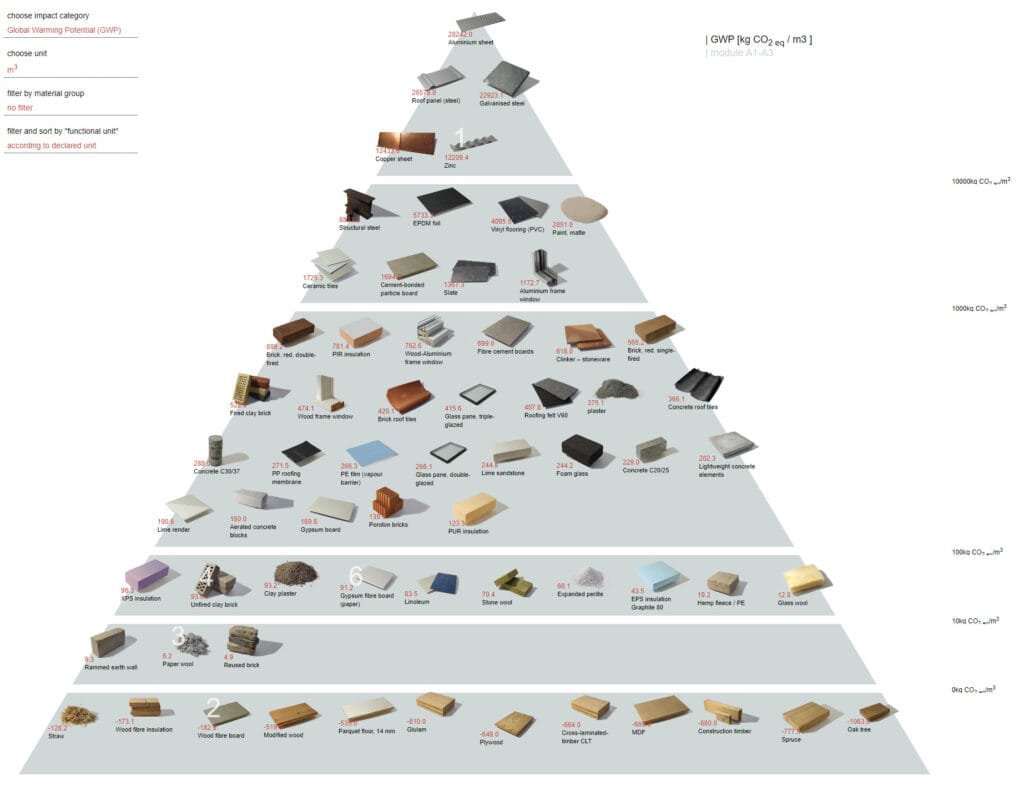
2. Materials Used in Pyramid Construction
Building the pyramids required an enormous amount of materials, some of which were sourced from distant locations. The majority of the stones used in construction were limestone, extracted from quarries near Giza, while granite, a much harder stone, was used for the internal chambers and structural elements of the pyramid. The use of different materials for various parts of the pyramid speaks to the Egyptians’ advanced knowledge of stoneworking. The lighter limestone blocks were easier to carve and transport, while the granite blocks, which were much heavier and stronger, were used to create the interior chambers that housed the pharaoh’s burial chamber. The transportation of these materials, especially granite from Aswan, located over 800 kilometers away, demonstrates the logistical expertise of the ancient Egyptians and their ability to mobilize resources across vast distances.
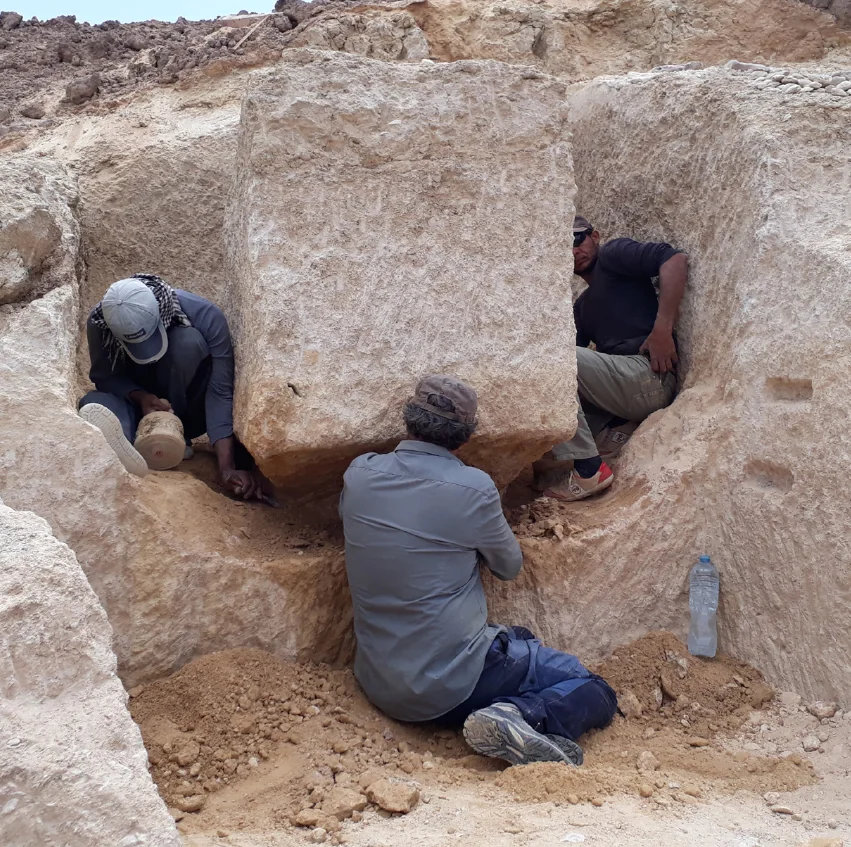
3. How Were the Massive Stones Transported?
Transporting the massive stones from the quarries to the pyramid construction site was one of the greatest challenges the ancient Egyptians faced. Most of the limestone blocks were transported via the Nile River, using large boats and rafts. The annual flooding of the Nile helped raise the water levels, providing a natural means of transport. Once the materials arrived at the construction site, they were unloaded and moved on land, possibly using sledges or wooden rollers. The stones were likely dragged by workers, with ropes and manpower employed to move them. The logistics behind this process show the Egyptians' impressive understanding of both their environment and their ability to manipulate it for large-scale construction projects. The use of water transport, combined with labor-intensive methods on land, made the movement of heavy stones feasible.
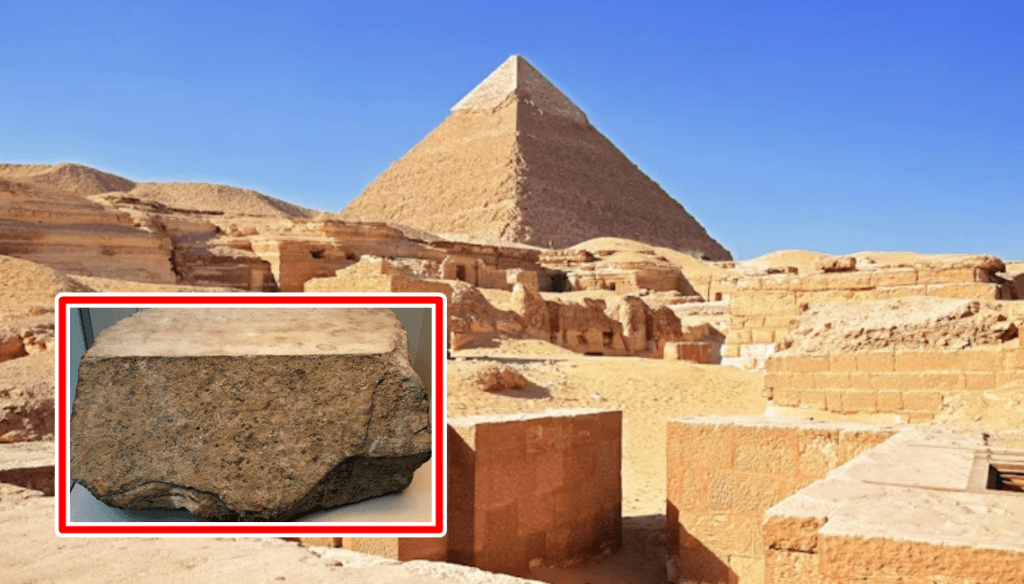
4. How Were the Stones Raised to Such Heights?
Lifting the enormous stones to the heights required to construct the pyramids remains one of the most debated aspects of their construction. The most popular theory is the use of spiral ramps, which were built around the pyramid as it rose. These ramps would have allowed workers to drag the stones up in stages, making it easier to lift heavy materials to higher levels. Some researchers also suggest that straight ramps were used along the side of the pyramid, allowing workers to pull the stones upwards. Additionally, the Egyptians likely employed simple machines such as levers and pulleys to assist in lifting the stones to the correct positions. These tools would have made it easier to manipulate the stones with fewer workers and less physical strain, demonstrating the Egyptians' ingenuity in using available resources for efficient construction.

5. Precision Engineering and Planning
The construction of the pyramids required not only manpower but also advanced knowledge of geometry, mathematics, and engineering. The Egyptians demonstrated remarkable precision in aligning the pyramids with the cardinal points and ensuring that the angles of the sides were accurate to ensure structural integrity. The Great Pyramid of Giza, for example, is aligned almost perfectly with true north. The dimensions and proportions of the pyramid were also mathematically calculated, with the relationship between the height and the base providing the structure with stability. The Egyptians likely used basic measuring tools, such as ropes with knots and plumb bobs, to achieve such precision. The pyramid’s design and alignment are testaments to the Egyptians’ mastery of engineering and their ability to combine practical and spiritual knowledge to build these eternal monuments.
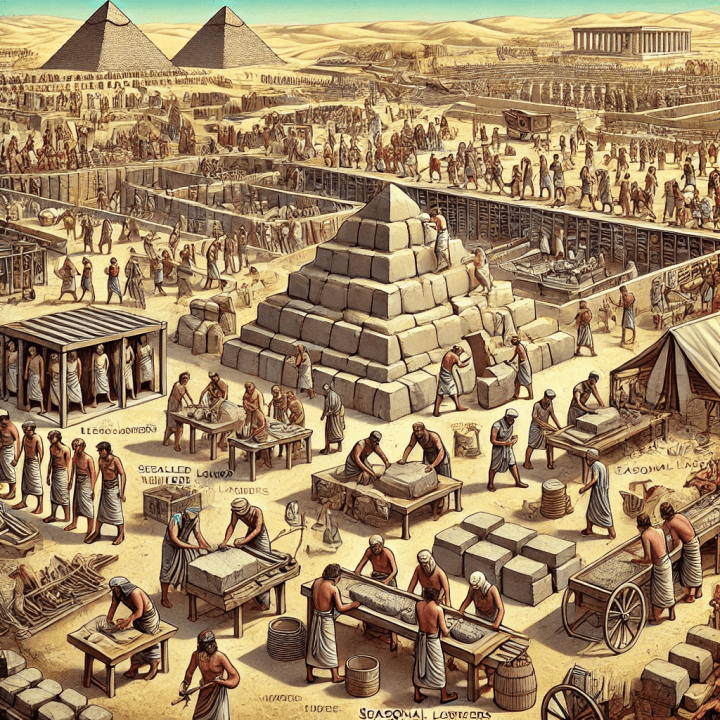
6. Workforce and Laborers
Contrary to popular belief, the pyramids were not built by slaves but by a skilled workforce employed by the state. These workers were well-fed, housed, and provided with medical care, as they played a crucial role in the construction of the pharaoh’s final resting place. Evidence suggests that the workers were organized into crews, with each crew being responsible for a specific task, such as quarrying the stone, transporting it, or assembling it at the pyramid site. These workers were likely experienced craftsmen, engineers, and laborers who worked in shifts, ensuring that the construction was continuous and efficient. Large labor camps were set up near the construction sites to house these workers, and archaeological findings indicate that the laborers were given ample food, which included meat and beer, to maintain their strength for the physically demanding work.
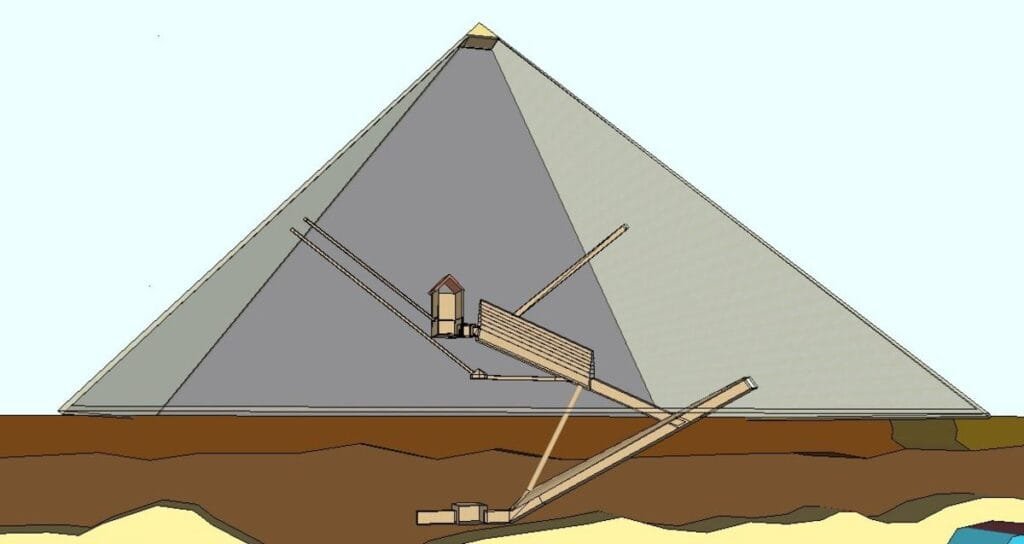
7. The Purpose Behind the Pyramids
The pyramids served as tombs for the pharaohs, as they were believed to help ensure the pharaoh’s successful journey to the afterlife. The ancient Egyptians believed that the soul of the deceased would need assistance in the afterlife, and the pyramid served as a place of protection and a gateway to eternity. The structure was designed to preserve the pharaoh’s body and belongings, including food, treasures, and even statues of servants, to accompany him in the next life. The pyramid's design was intended to symbolize the sun's rays, with the sloping sides representing the journey of the pharaoh’s soul toward the heavens. It was believed that the pyramid would facilitate the pharaoh’s transformation into a divine being, and the grand scale of the structure reflected the god-like status of the ruler.

8. Continuing Mysteries and Questions
Despite centuries of research and exploration, many questions about the construction of the pyramids remain unanswered. While modern scholars have developed plausible theories about how the Egyptians moved and lifted the stones, the exact methods used remain speculative. New archaeological discoveries and technologies continue to shed light on ancient building techniques, yet the sheer scale of the project, combined with the lack of detailed records, means that the mysteries surrounding the pyramids will likely persist. Some researchers continue to search for hidden chambers within the pyramids or evidence of unknown construction techniques, hoping to unlock more secrets about these ancient structures.


